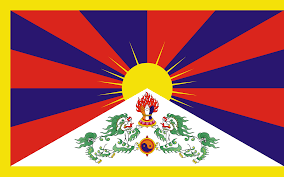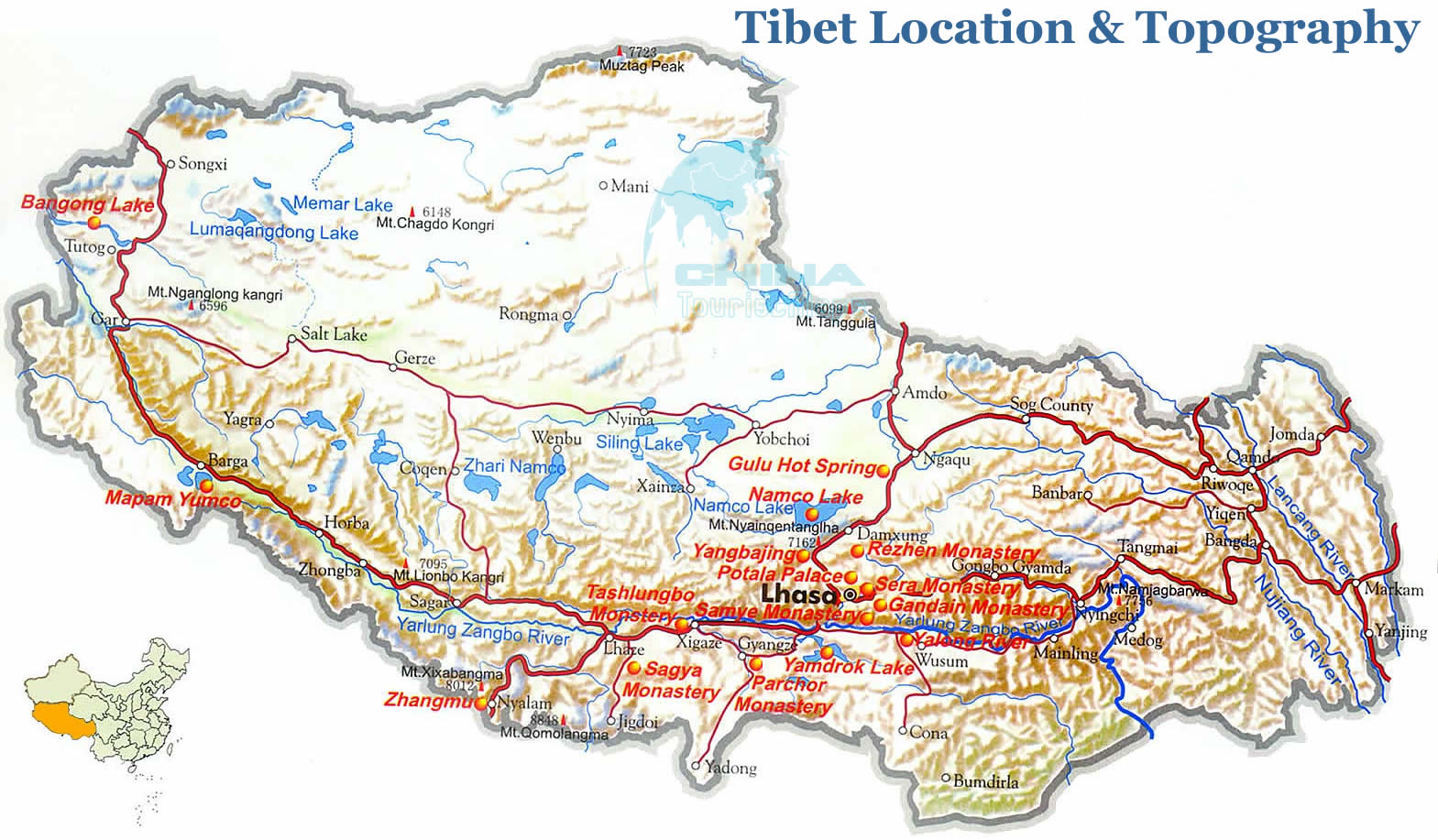| INTRODUCTION:
Tibet is a region on the Tibetan Plateau in Eastern Asia. It is the traditional homeland of the Tibetan people as well as some other ethnic groups such as Monpa, Qiang and Lhoba peoples and is now also inhabited by considerable numbers of Han Chinese and Hui people. Tibet is the highest region on Earth, with an average elevation of 4,900 metres (16,000 ft). The highest elevation in Tibet is Mount Everest, earth’s highest mountain rising 8,848 m (29,029 ft) above sea level. The Tibetan Empire emerged in the 7th century, but with the fall of the empire the region soon divided into a variety of territories. The bulk of western and central Tibet (Ü-Tsang) was often at least nominally unified under a series of Tibetan governments in Lhasa, Shigatse, or nearby locations; these governments were at various times under Mongol and Chinese over lordship. The eastern regions of Kham and Amdo often maintained a more decentralized indigenous political structure, being divided among a number of small principalities and tribal groups, while also often falling more directly under Chinese rule after the Battle of Chamdo; most of this area was eventually incorporated into the Chinese provinces of Sichuan and Qinghai. The current borders of Tibet were generally established in the 18th century. |
 |
| GEOGRAPHY
Tibet has some of the world’s tallest mountains, with several of them making the top ten list. Mount Everest, located on the border with Nepal, is, at 8,848 metres (29,029 ft), the highest mountain on earth. Several major rivers have their source in the Tibetan Plateau (mostly in present-day Qinghai Province). These include the Yangtze, Yellow River, Indus River, Mekong, Ganges, Salween and the Yarlung Tsangpo River (Brahmaputra River). The Yarlung Tsangpo Grand Canyon, along the Yarlung Tsangpo River, is among the deepest and longest canyons in the world. Tibet has been called the “Water Tower” of Asia, and China is investing heavily in water projects in Tibet. The Indus and Brahmaputra rivers originate from a lake (Tib: Tso Mapham) in Western Tibet, near Mount Kailash. The mountain is a holy pilgrimage site for both Hindus and Tibetans. The Hindus consider the mountain to be the abode of Lord Shiva. The Tibetan name for Mt. Kailash is Khang Rinpoche. Tibet has numerous high-altitude lakes referred to in Tibetan as tsoor co. These include Qinghai Lake, Lake Manasarovar, Namtso, Pangong Tso, Yamdrok Lake, Siling Co, Lhamo La-tso, Lumajangdong Co, Lake Puma Yumco, Lake Paiku, Lake Rakshastal, Dagze Co and Dong Co. The Qinghai Lake (Koko Nor) is the largest lake in the People’s Republic of China. |
 |
| CLIMATE:
The atmosphere is severely dry nine months of the year, and average annual snowfall is only 18 inches (46 cm), due to the rain shadow effect. Western passes receive small amounts of fresh snow each year but remain traversible all year round. Low temperatures are prevalent throughout these western regions, where bleak desolation is unrelieved by any vegetation bigger than a low bush, and where wind sweeps unchecked across vast expanses of arid plain. The Indian monsoon exerts some influence on eastern Tibet. Northern Tibet is subject to high temperatures in the summer and intense cold in the winter. |
|
| PEOPLE OF TIBET:
Historically, the population of Tibet consisted of primarily ethnic Tibetans and some other ethnic groups. According to tradition the original ancestors of the Tibetan people, as represented by the six red bands in the Tibetan flag, are: the Se, Mu, Dong, Tong, Dru and Ra. Other traditional ethnic groups with significant population or with the majority of the ethnic group residing in Tibet (excluding a disputed area with India) include Bai people,Blang, Bonan, Dongxiang, Han, Hui people, Lhoba, Lisu people, Miao, Mongols, Monguor (Tu people), Menba (Monpa), Mosuo, Nakhi, Qiang, Nu people, Pumi, Salar, and Yi people. The proportion of the non-Tibetan population in Tibet is disputed.
|
|
| RELIGION OF TIBET:
Religion is extremely important to the Tibetans and has a strong influence over all aspects of their lives. Bön is the ancient religion of Tibet, but has been almost eclipsed by Tibetan Buddhism, a distinctive form of Mahayana and Vajrayana, which was introduced into Tibet from the Sanskrit Buddhist tradition of northern India. Tibetan Buddhism is practiced not only in Tibet but also in Mongolia, parts of northern India, the Buryat Republic, theTuva Republic, and in the Republic of Kalmykia and some other parts of China. During China’s Cultural Revolution, nearly all Tibet’s monasteries were ransacked and destroyed by the Red Guards. A few monasteries have begun to rebuild since the 1980s (with limited support from the Chinese government) and greater religious freedom has been granted – although it is still limited. Monks returned to monasteries across Tibet and monastic education resumed even though the number of monks imposed is strictly limited. Before the 1950s, between 10 and 20% of males in Tibet were monks. Tibetan Buddhism has four main traditions (the suffix pa is comparable to “er” in English):
|
|
